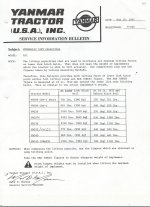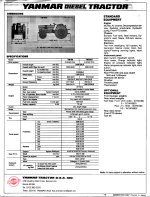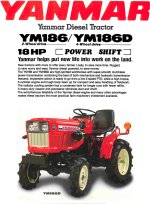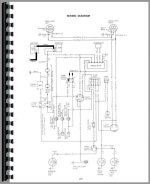bmaverick
Super Member
- Joined
- Sep 17, 2013
- Messages
- 6,681
- Location
- Beloit-WI
- Tractor
- Yanmar YM2610 ■YANMAR GURU■ EXTRAORDINAIRE
Maybe replacing the gasket dislodged crud that was blocking something. Good to hear it shifts ok now.
I think even 300 Kg (660 lbs) on the back is optimistic. Maybe that's measured at the pins, not per later industry standard which is 24 inches back.
I tried mounting my 3-point backhoe, claimed 750 lbs, on the YM186D. Couldn't lift it. I used the backhoe's dipper to lift some of the weight. Then when I raised the bucket off the ground the little tractor cried. I quit before I broke something. The backhoe went back on the YM240 where its near the limit of what that one can lift, even though it was originally sold as an OEM implement for that model.
California, I would have to agree. Yanmar's ratings are not based on ASME, SAE nor ASAE standards. They are based on JIS (Japanese Industry Standards).
Japanese Industrial Standards - Wikipedia
With that said, the 3PT lift is based on "your mileage may differ" slogan of the 80s and 90s. Thus, I too would error on the LEAST value of 300Kg (660-lbs).
Tractor data as Winston pointed out does have for 'certain' models the Nebraska Test results. The closest to the YM186 is the YM226. The measurements are taken like you had mentioned at, the ends of the drawbar OR at 24-inches beyond the drawbar.
rScotty has mentioned in the past that the Yanmar publications at times did have some wrong values.







